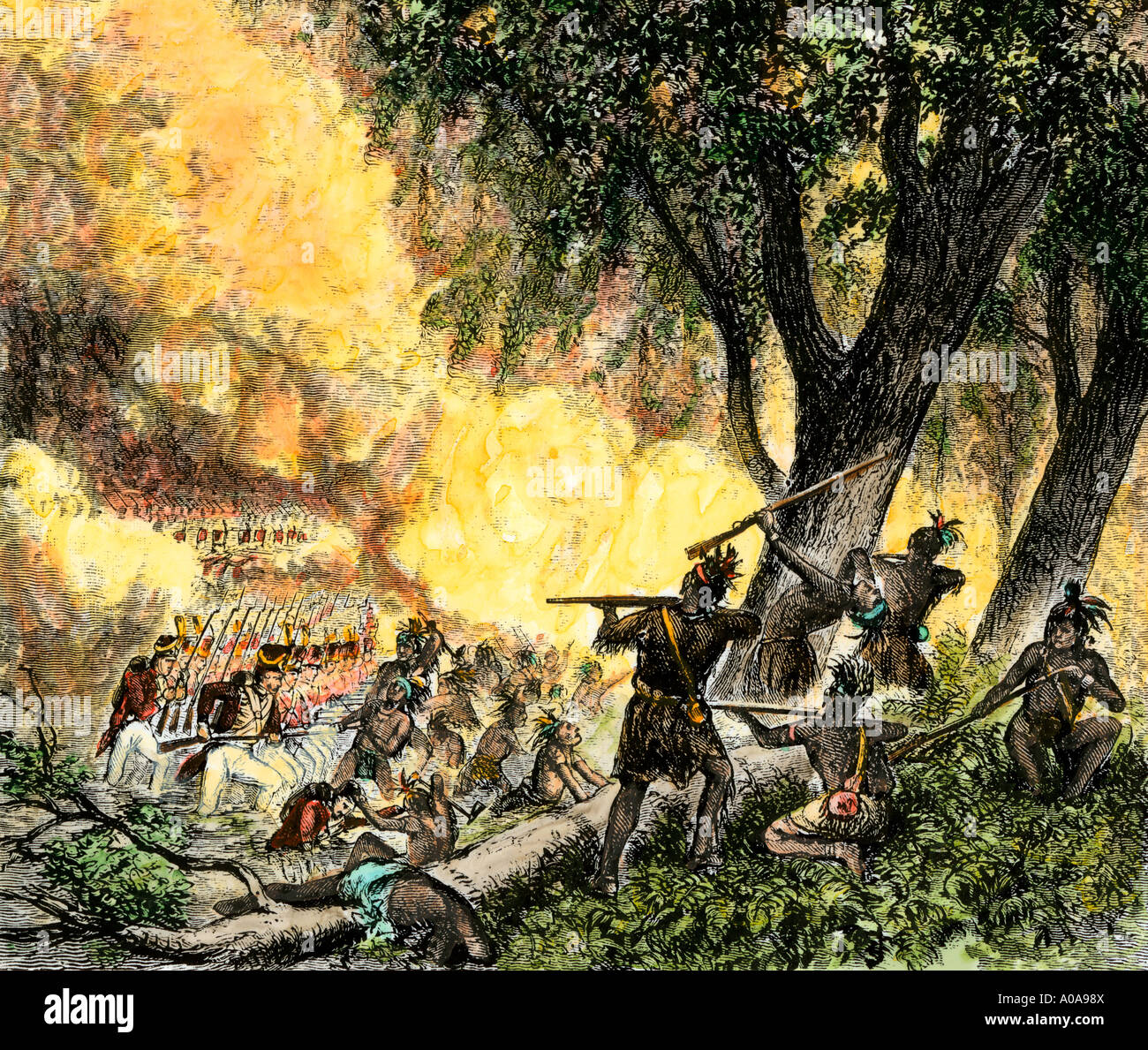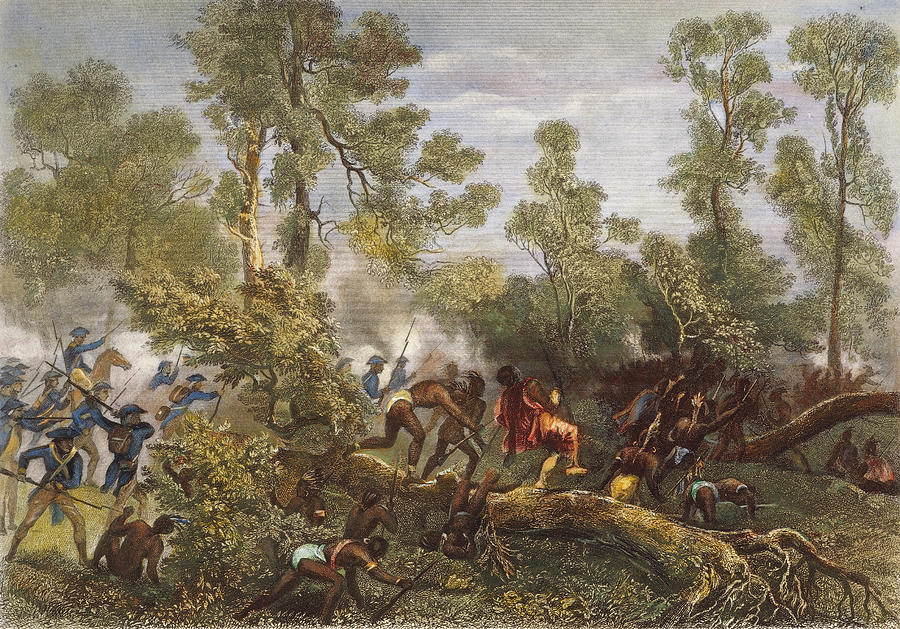
The Echo of Axes and Empires: How the Battle of Fallen Timbers Forged America’s West
MAUMEE, OHIO – In the humid depths of an Ohio summer, where the Maumee River winds its way towards Lake Erie, a stretch of land scarred by an ancient storm became the crucible of American destiny. On August 20, 1794, amidst a tangle of fallen trees, the fledgling United States Army clashed with a formidable confederacy of Native American nations, backed by British interests. What unfolded over a mere 40 minutes at the Battle of Fallen Timbers was not just a military engagement, but a pivotal moment that would irrevocably shape the future of the American frontier, securing vast territories for westward expansion and forever altering the landscape for its indigenous inhabitants.
The roots of this conflict stretched back to the very end of the American Revolutionary War. While the Treaty of Paris in 1783 ostensibly granted the United States control over the lands west of the Appalachian Mountains, extending to the Mississippi River, it conspicuously ignored the established sovereignty of the Native American nations who had inhabited these territories for millennia. For the Shawnee, Miami, Delaware, Wyandot, and other tribes of the Ohio Country, this land was their ancestral home, not an empty canvas for American settlement. They formed a powerful confederacy, determined to defend their lands against the relentless tide of American pioneers pushing westward.
This volatile situation was further complicated by the lingering presence of the British. Despite their defeat in the Revolution, the British maintained a chain of forts within American territory, including Fort Miamis, strategically located near the future battlefield. From these outposts, they continued to supply Native American tribes with weapons, ammunition, and encouragement, hoping to create a buffer state that would protect their lucrative fur trade and prevent American expansion from threatening Canada.

The first attempts by the United States to assert control over the Ohio Country were disastrous. In 1790, General Josiah Harmar led an expedition against the Miami and Shawnee, suffering a humiliating defeat. The following year, an even larger force under Governor Arthur St. Clair marched into the territory, only to be ambushed and routed by a confederacy led by the brilliant Miami chief Little Turtle and the Shawnee war chief Blue Jacket. St. Clair’s defeat remains the greatest loss ever inflicted upon the U.S. Army by Native American forces, with over 900 American casualties. This catastrophic setback sent shockwaves through the young republic, threatening to destabilize the Northwest Territory and undermine the authority of President George Washington’s administration.
"Mad Anthony" and the Legion
It was against this backdrop of repeated failure and growing national anxiety that President Washington turned to a figure known for his audacious courage and strict discipline: Major General Anthony Wayne. A Revolutionary War hero whose impetuous battlefield conduct earned him the moniker "Mad Anthony," Wayne was tasked with a monumental challenge: to build a new, professional army from scratch and decisively defeat the formidable Native American confederacy.
Wayne understood that the previous American defeats were due not just to Native American fighting prowess, but to the lack of discipline, training, and experience within the American ranks. He established "Legionville" near Pittsburgh, a rigorous training camp where he forged what he called the "Legion of the United States." Unlike the militias of previous campaigns, Wayne’s Legion was a well-drilled, highly disciplined fighting force, trained in skirmishing, bayonet charges, and rapid maneuvers – tactics specifically designed to counter the guerilla warfare employed by the Native Americans. He instilled in his men a sense of professionalism and esprit de corps, understanding that a well-fed, well-clothed, and rigorously trained soldier was a more effective soldier. "Discipline and exactitude are the soul of an army," Wayne often stated, and he lived by that creed.
For two years, Wayne meticulously prepared. He advanced slowly, building a series of forts – Fort Recovery, Fort Defiance – extending American lines of communication and supply deeper into the contested territory. This deliberate pace frustrated his opponents, but it allowed him to consolidate his gains and keep his troops well-supplied and healthy, a stark contrast to St. Clair’s ill-equipped and disease-ridden force.
The Native Stand and a Prophetic Warning
On the Native American side, the confederacy, primarily led by Blue Jacket of the Shawnee and Little Turtle of the Miami, faced internal divisions. Little Turtle, having witnessed Wayne’s methodical advance and the superior training of his Legion, grew increasingly wary. He famously urged caution, reportedly telling his fellow chiefs, "We have beaten the enemy twice under different commanders. We cannot expect the same good fortune always to attend us. The Americans are now led by a chief who never sleeps… It would be best for us to listen to his terms of peace."
However, Blue Jacket, along with other influential chiefs like Buckongahelas of the Delaware, argued for another decisive stand. They believed their knowledge of the terrain and their fighting spirit could once again repel the invaders. They chose a site known as "Fallen Timbers," a dense area of trees blown down by a severe storm, creating a natural labyrinth of obstacles. They believed this tangled terrain would neutralize Wayne’s cavalry and disrupt his disciplined formations, allowing them to ambush the American forces as they navigated the difficult ground.

The Battle Unfolds
On the morning of August 20, 1794, the American Legion, numbering around 3,000 men, advanced cautiously. The Native American warriors, estimated between 1,000 and 2,000, had been waiting for days, many having fasted, which may have weakened them. A small detachment of Wayne’s Legion, serving as scouts, stumbled upon the Native American positions. The trap was sprung.
However, the Native American strategy quickly unraveled. Wayne, ever the pragmatist, immediately recognized the nature of the ambush. He ordered a swift, decisive bayonet charge through the fallen timbers, knowing that the dense undergrowth would prevent the Native Americans from effectively reloading their muskets, which was a time-consuming process. "Charge them with the bayonet!" Wayne commanded. "Rouse them from their coverts with the bayonet and the Legion’s discipline!"
The disciplined American lines, using fixed bayonets, crashed through the Native American positions. Unlike previous encounters where Native American warriors could fire and then melt back into the woods, Wayne’s relentless charge denied them this opportunity. Simultaneously, Wayne ordered his cavalry to flank the Native American positions, turning their intended ambush into a rout. The Native American warriors, caught off guard by the speed and ferocity of the American attack, and unable to effectively regroup in the chaotic terrain, began to break and flee.
The battle itself was remarkably brief, lasting less than an hour. The American casualties were relatively light, with 33 killed and 100 wounded. Native American casualties are harder to ascertain but were likely higher, though the true impact was the complete disorganization and demoralization of their fighting force.
Crucially, as the defeated Native American warriors retreated, they sought refuge at the nearby British Fort Miamis, expecting aid. To their dismay and profound anger, the gates of the fort remained closed. Major William Campbell, the British commander, refused to open fire on the pursuing Americans, not wanting to spark another war with the United States. This British betrayal was a devastating blow to Native American morale and a clear signal that their former allies could not be relied upon. It shattered the illusion of British protection and underscored the harsh reality of their isolated position.
The Treaty of Greenville and a New Map
The immediate aftermath of Fallen Timbers saw Wayne’s Legion systematically destroy Native American villages and crops in the region, a grim tactic designed to break their will to resist. The decisive victory and the British abandonment forced the Native American confederacy to the negotiating table.
The following year, in August 1795, the Treaty of Greenville was signed. This landmark agreement, dictated largely by American terms, fundamentally reshaped the map of the Northwest Territory. The Native American nations ceded vast tracts of land, encompassing most of present-day Ohio and parts of Indiana, to the United States. In return, they received annuity payments and retained certain hunting rights on lands they still possessed. For the United States, the treaty opened up the Ohio Valley to settlement, securing a vital pathway for westward expansion. For the Native American nations, it marked the beginning of a long and tragic process of land loss, forced removal, and the erosion of their traditional ways of life.
Legacy and Lasting Impact
The Battle of Fallen Timbers and the subsequent Treaty of Greenville were watershed moments in American history.
- Securing the Northwest Territory: The victory firmly established American sovereignty over the Ohio Country, paving the way for Ohio to become the first state admitted to the Union from the Northwest Territory in 1803. It also eliminated the significant threat of a British-backed Native American confederacy, allowing the young republic to focus on internal development.
- The Rise of the Professional Army: Wayne’s Legion served as a prototype for the future U.S. Army. His emphasis on discipline, training, and professionalism laid the groundwork for a more effective military capable of defending national interests and expanding its borders.
- The End of an Era for Native Americans: For the indigenous peoples of the Ohio Valley, Fallen Timbers was a catastrophic defeat. It marked the end of their collective ability to resist American expansion on a large scale in the region. While figures like Tecumseh would later attempt to revive the confederacy, the momentum had shifted irrevocably. The treaty system established at Greenville set a precedent for future land cessions, leading to the eventual removal of many Eastern tribes further west.
- A Defining Moment for American Identity: The victory at Fallen Timbers bolstered national confidence and solidified the young nation’s control over its claimed territories. It demonstrated that the United States could project power and secure its borders, a crucial step in its journey from a loose confederation of states to a unified nation.
Today, a monument and a battlefield park near Maumee, Ohio, commemorate the Battle of Fallen Timbers. They stand as a silent testament to the clash of cultures, the struggle for land, and the decisive moment when the fate of an emerging nation was cast in the crucible of conflict, echoing the sound of axes clearing land and the strategic brilliance that forged the American West. The timbers may have fallen in 1794, but their historical impact continues to resonate through the fabric of American identity and the enduring legacy of its frontier.


